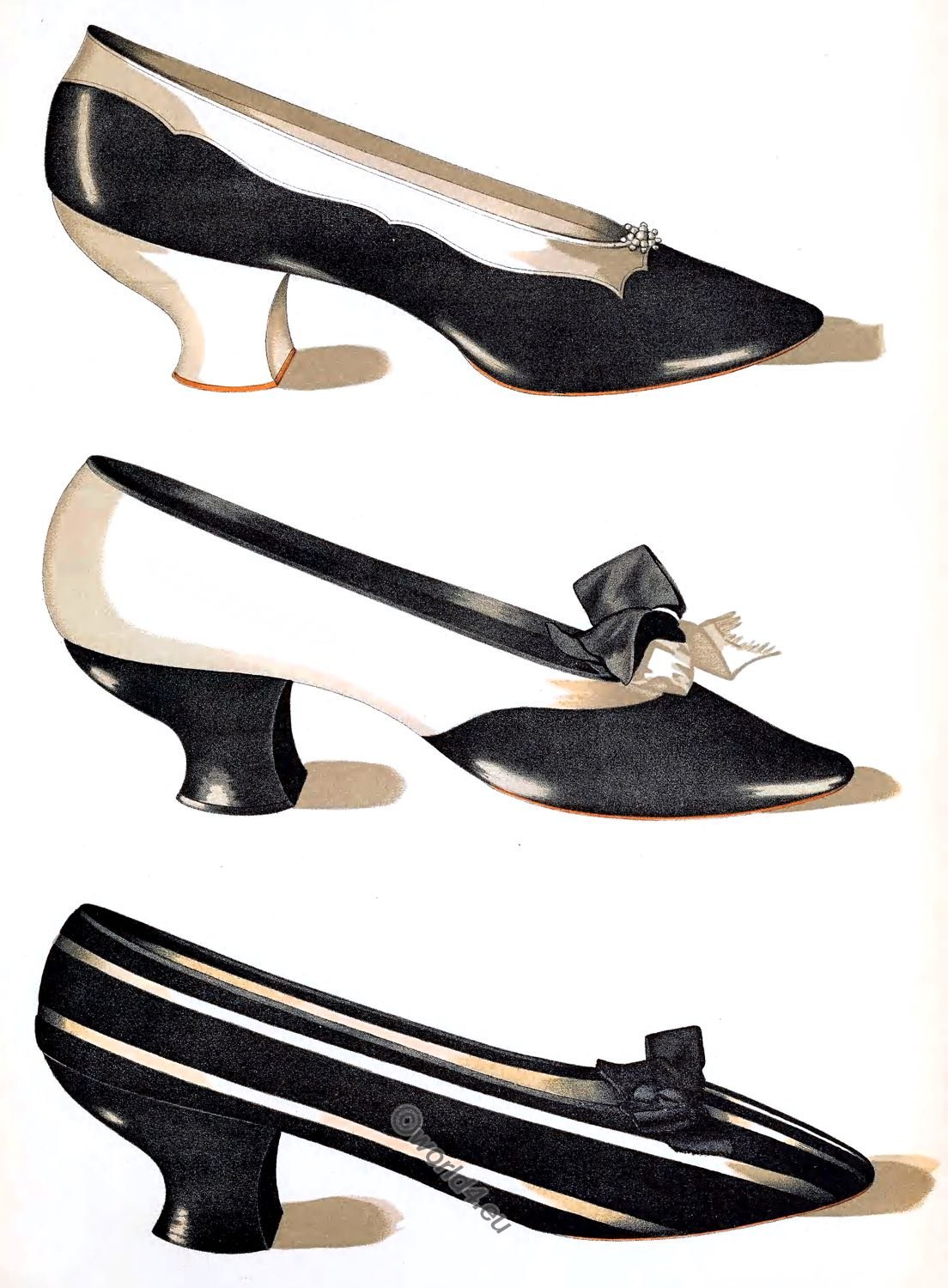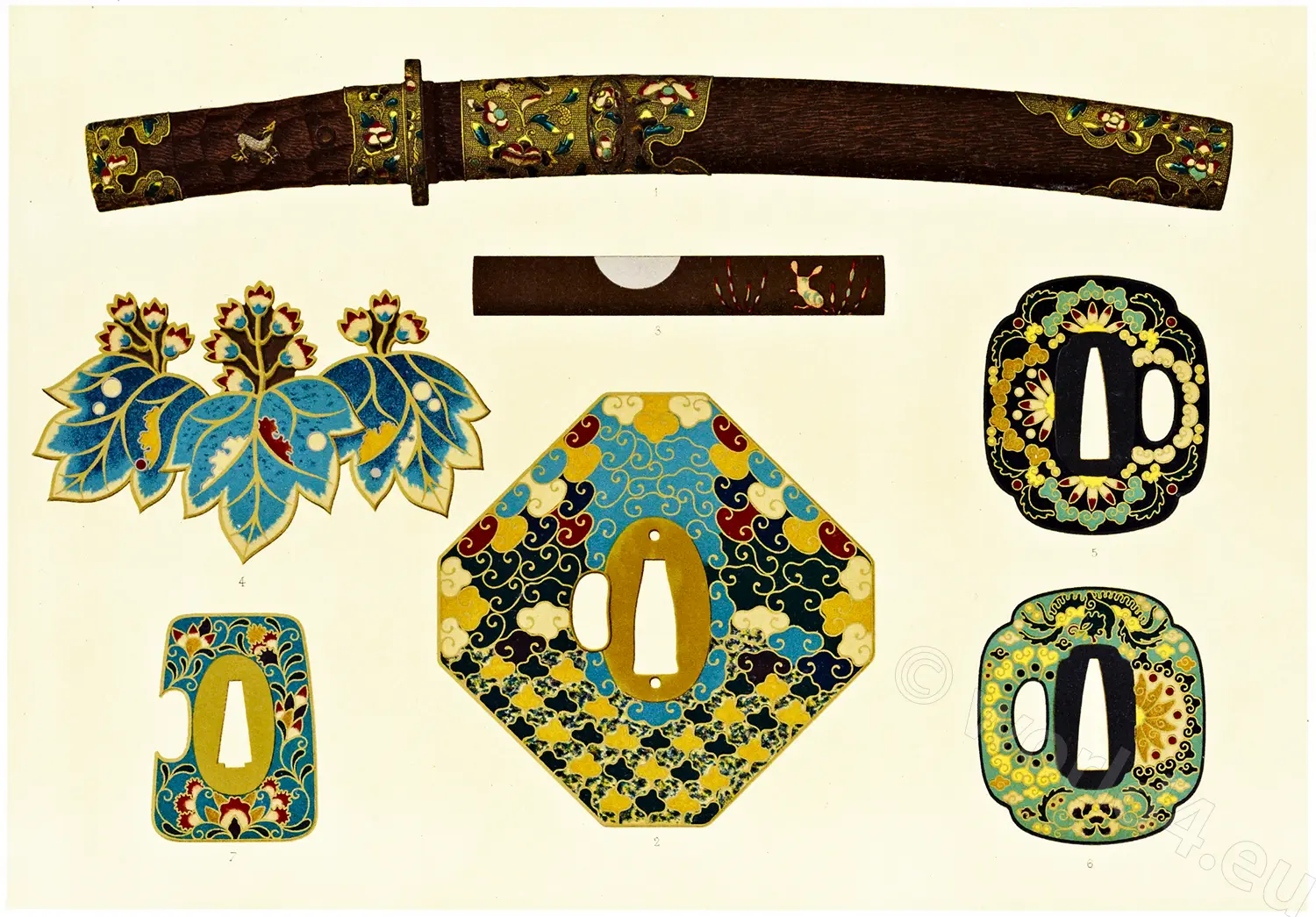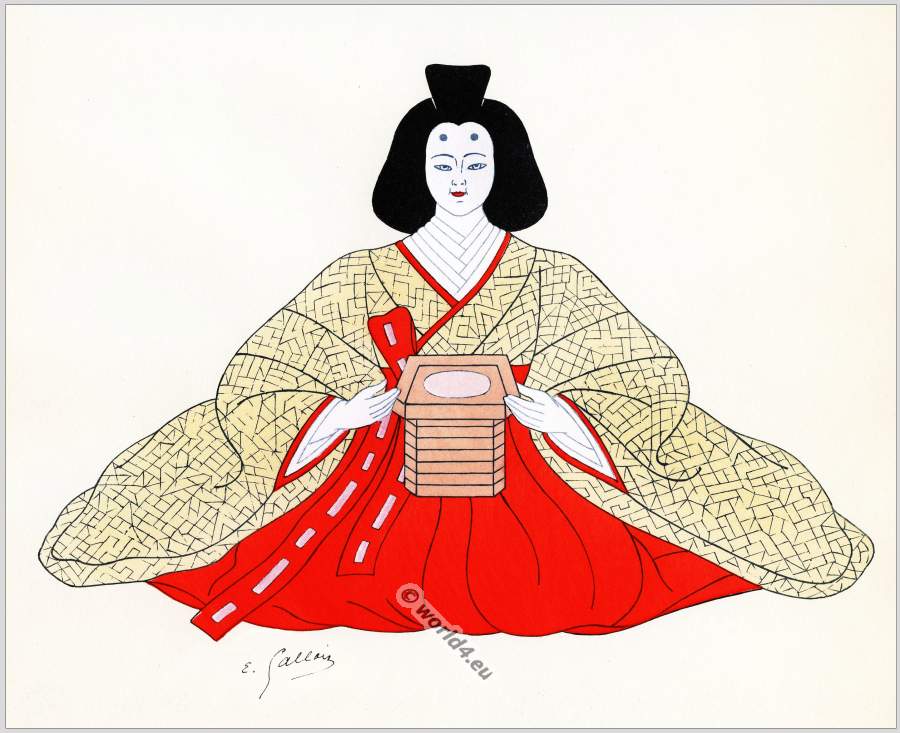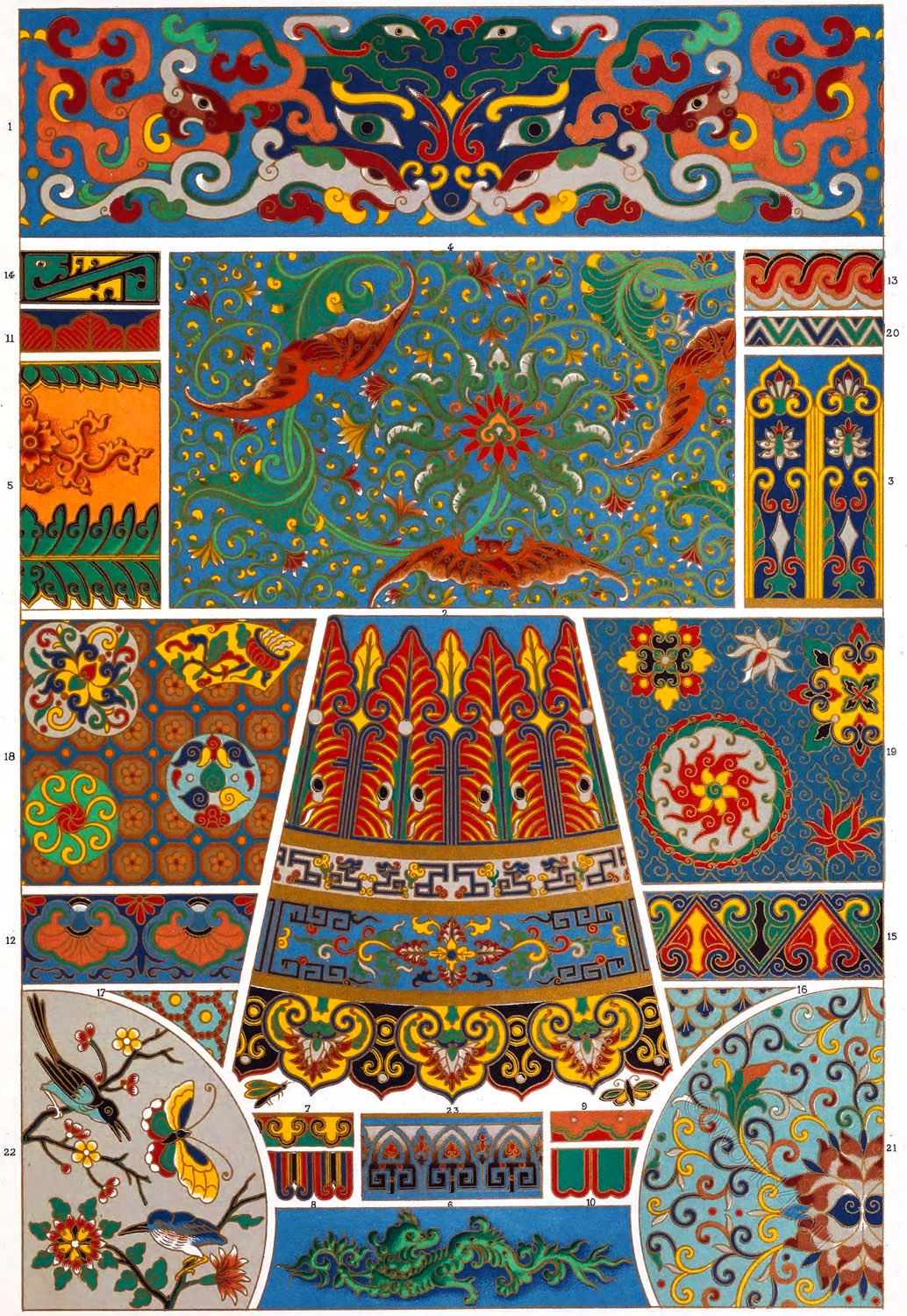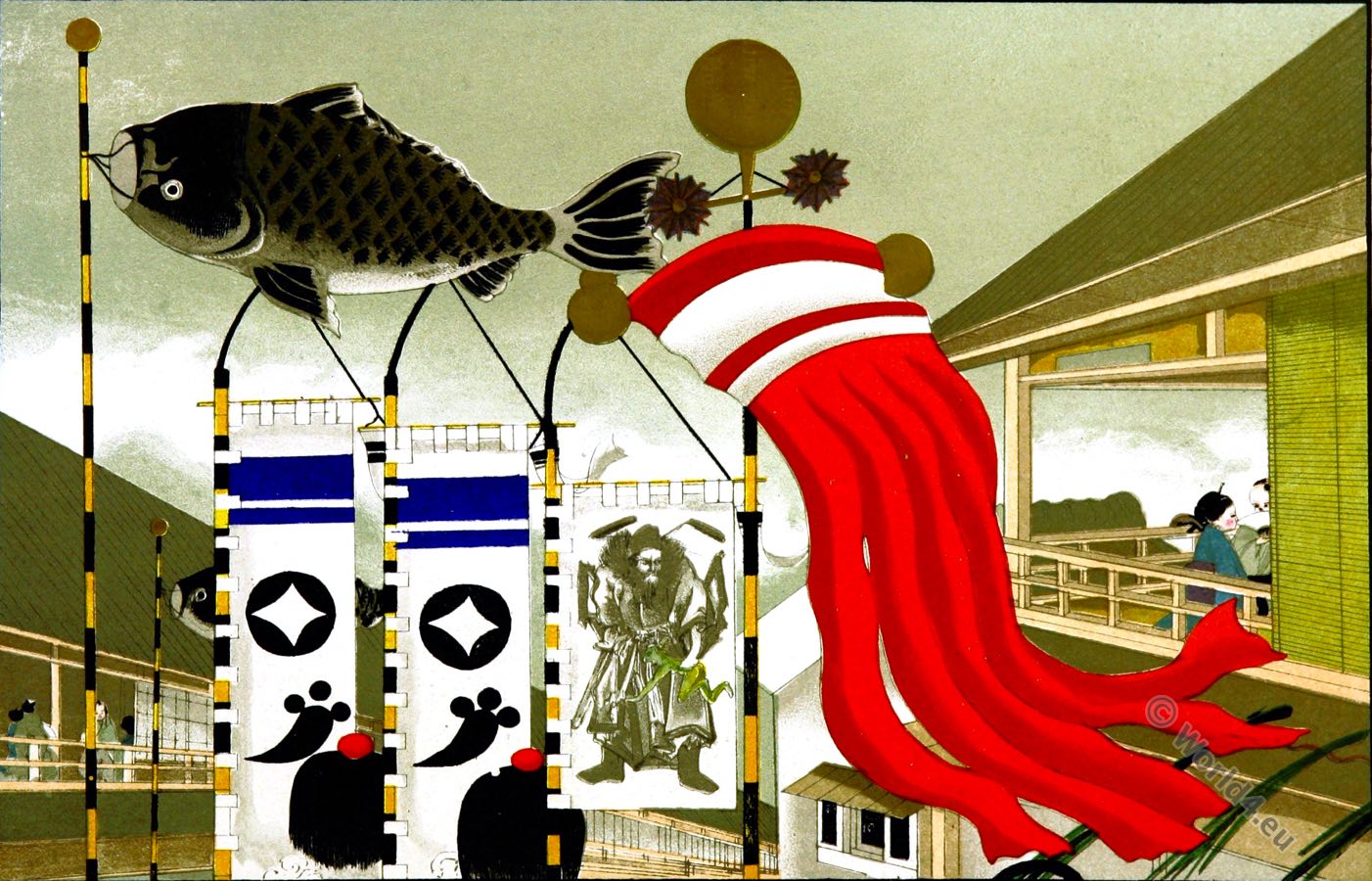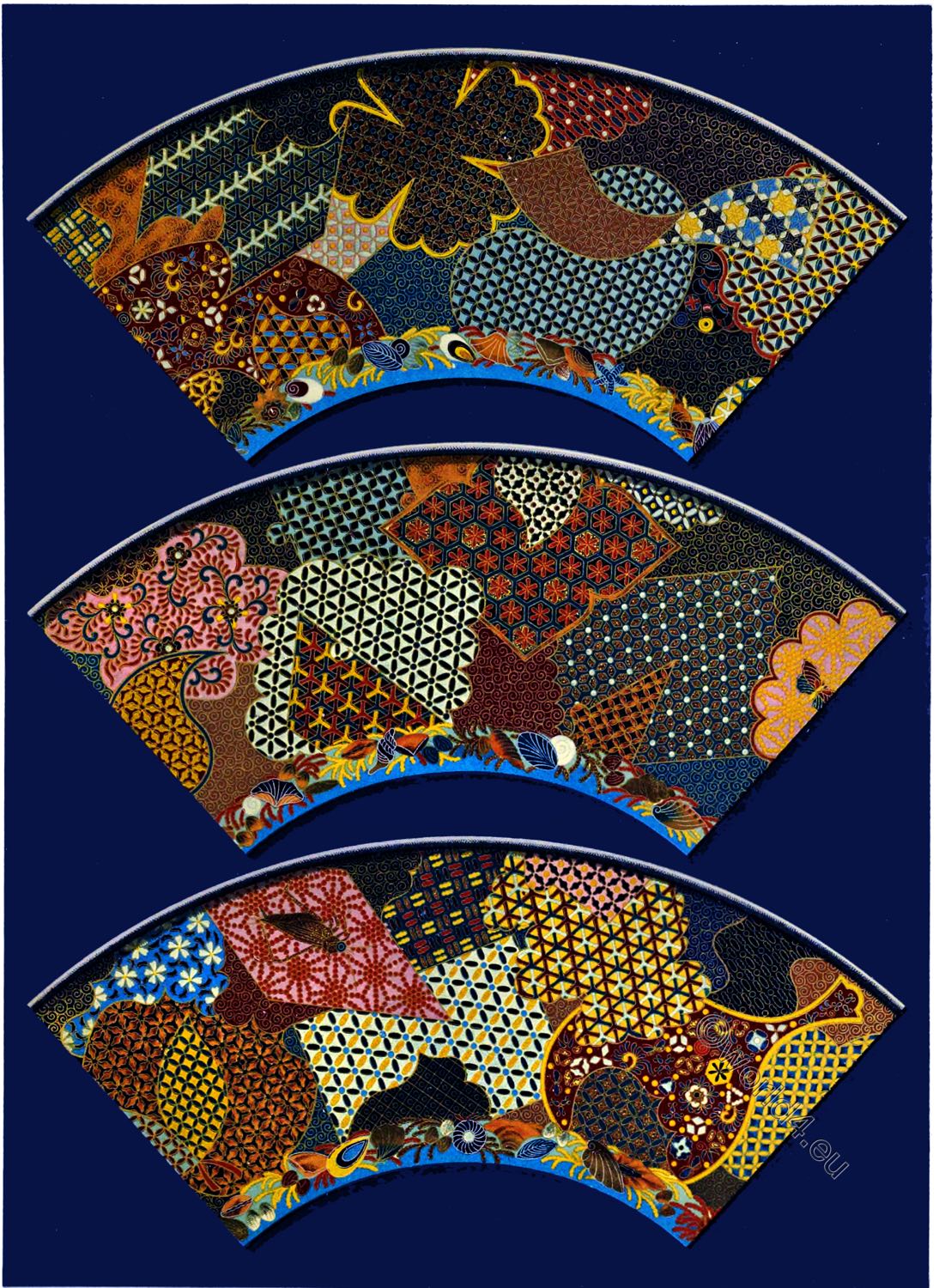Plate XII.
JAPANESE ART.
CLOISONNÉ ENAMEL.
AMONG the productions of this highly decorative Eastern art the Japanese style occupies so eminent a position that it is impossible to pass it by in silence.
We give an interesting specimen of it in the accompanying plate, which contains a number of examples all taken from the same object: a copper dish ornamented with cloisonné enamel on both sides. The upper part of our illustration is occupied by a section of the dish, while separate details are grouped in the lower part.
Japanese art, although very ingenious in the employment and combination of geometric lines, does not confine itself to that alone. The figures of flowers and animals are treated with much purity; and it is worthy of note that the interior divisions, which are unavoidable from the very nature of the work, always leave the outline of the object distinct.
The colours in the accompanying plate are like those of the original in the relative value of the tones, but are rather less dark as a whole; it was thought that a greater degree of freshness and brilliancy would, probably, better represent the original state of the model, or, at any rate, make it a more useful object of imitation for the workmen of the present day. (See Ch. Burty, Émaux cloisonnés, anciens et modernes, Paris, 1868.)
Source: Polychromatic ornament by Auguste Racinet. London, H. Sotheran and Co., 1877.
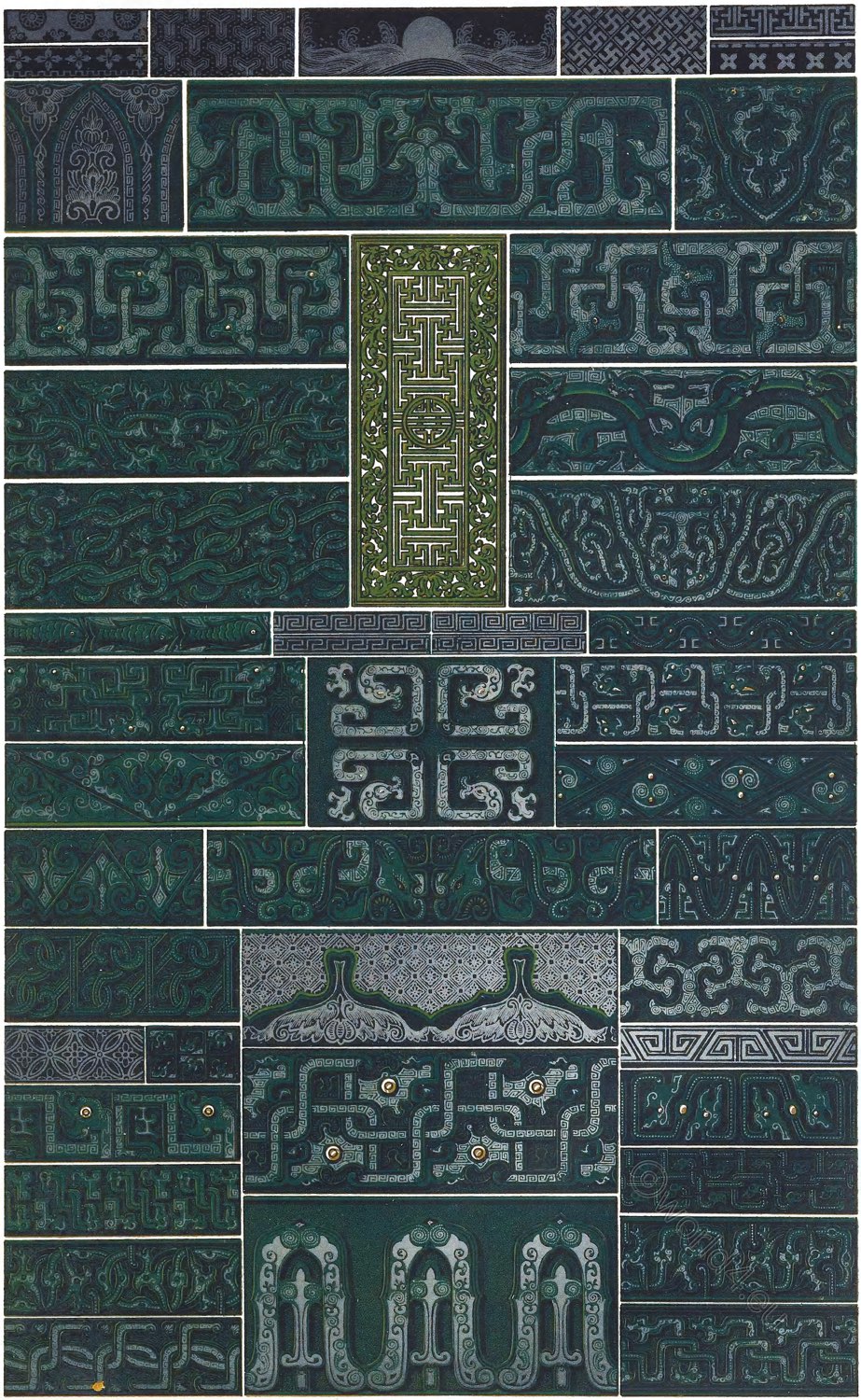

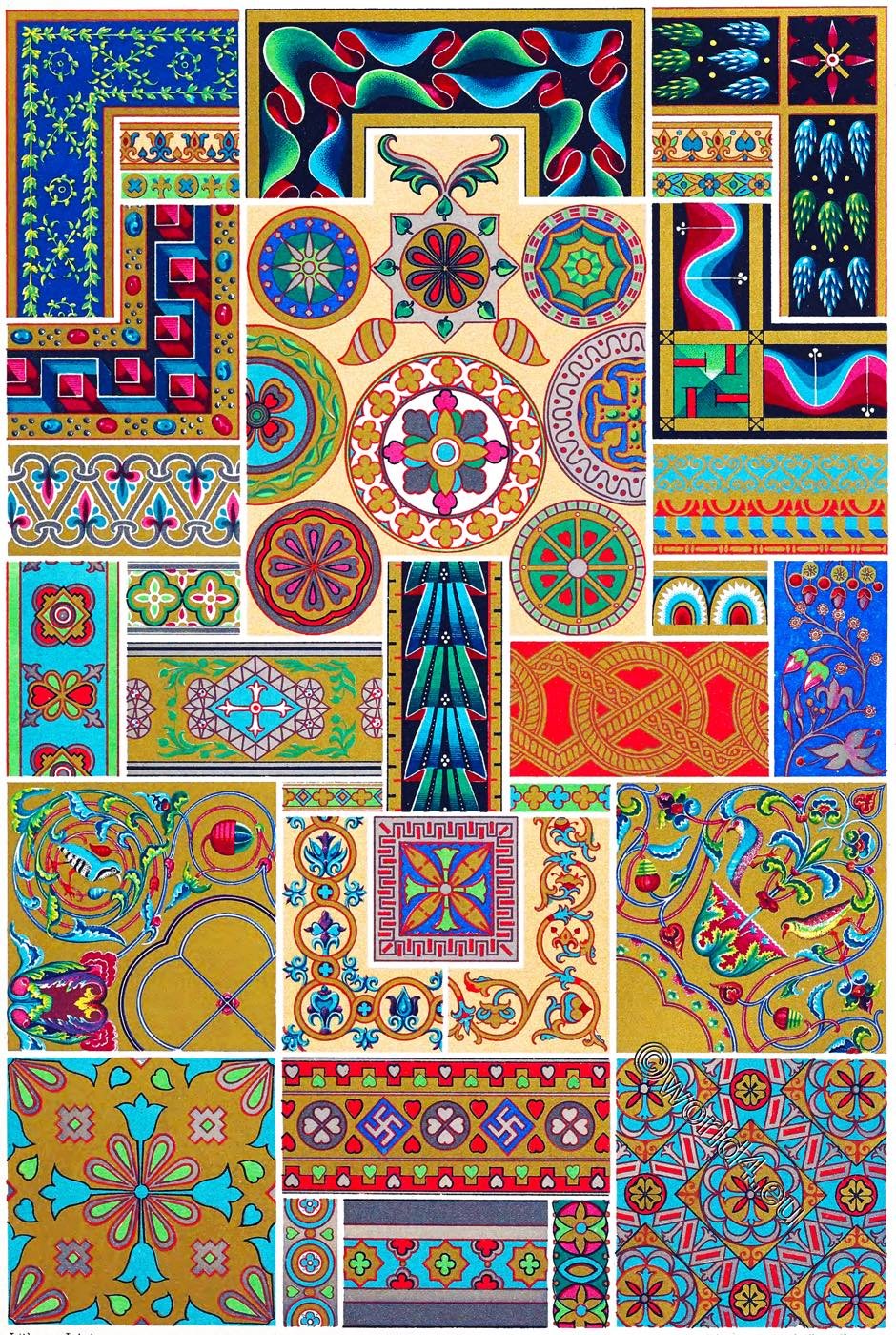
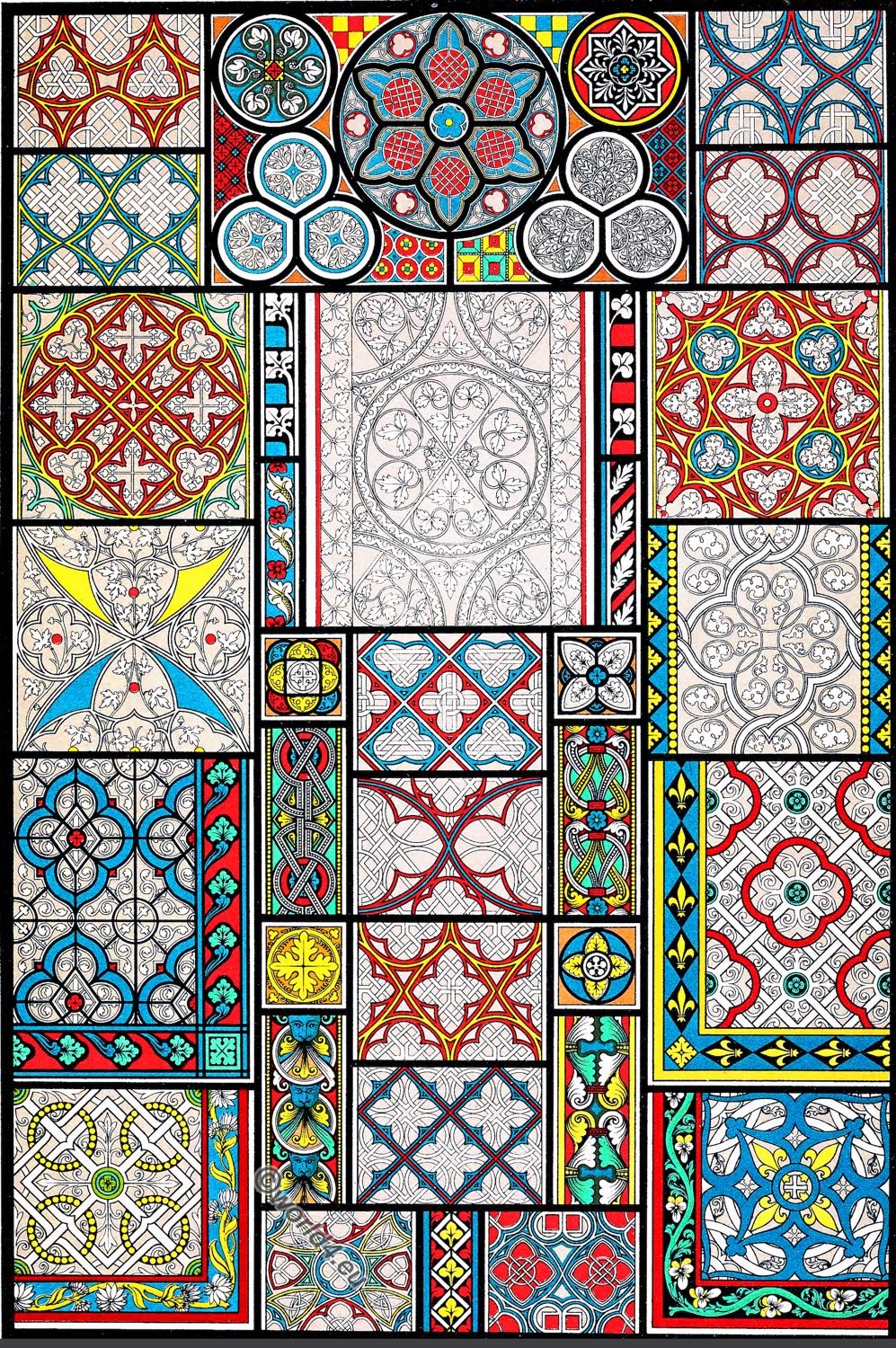
Discover more from World4 Costume Culture History
Subscribe to get the latest posts sent to your email.


